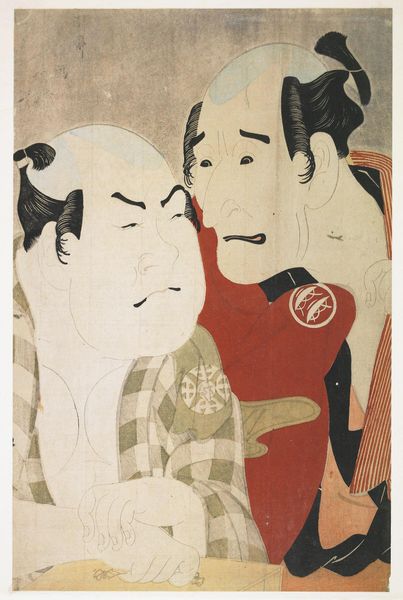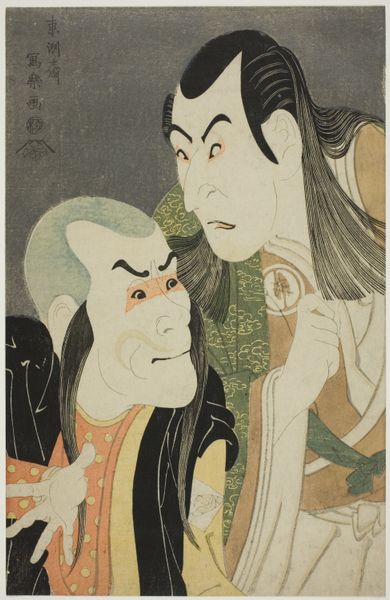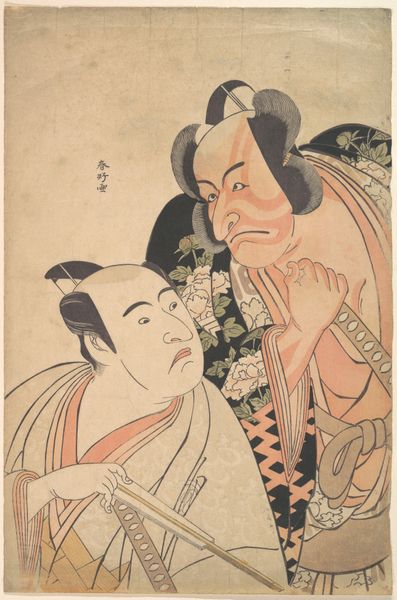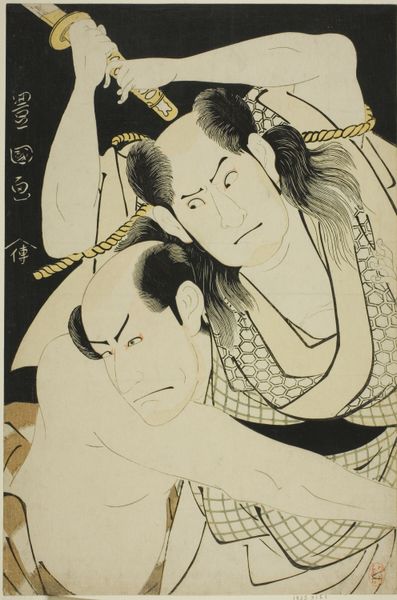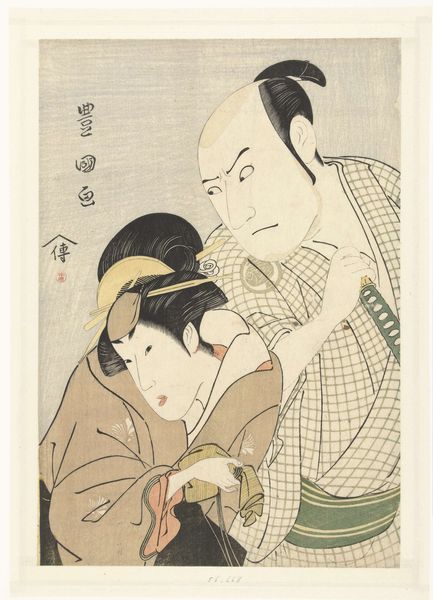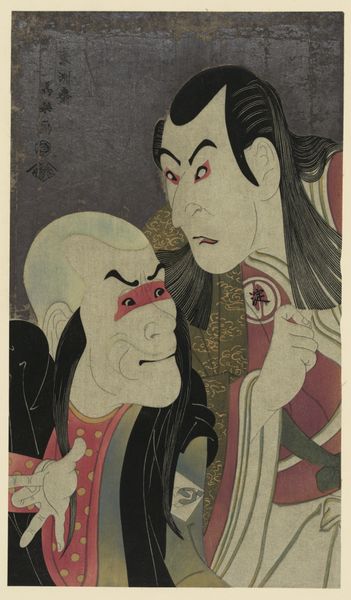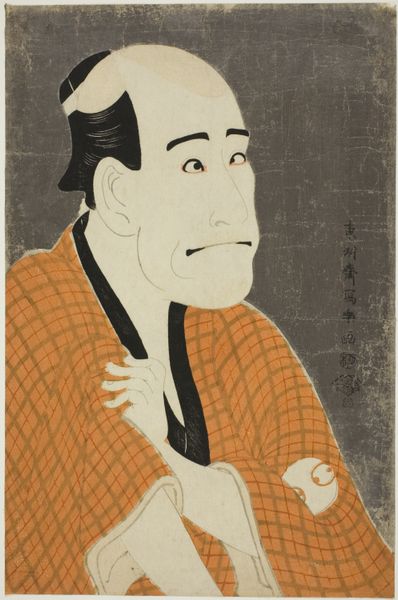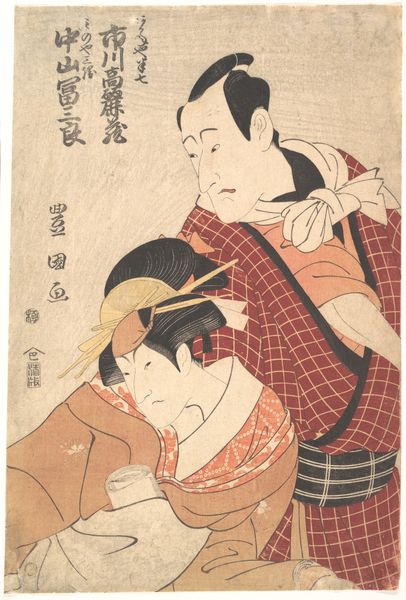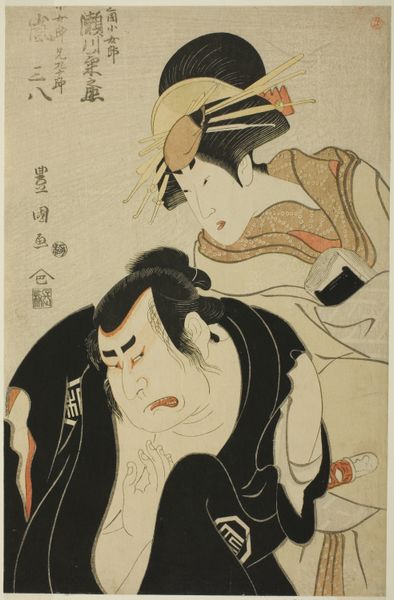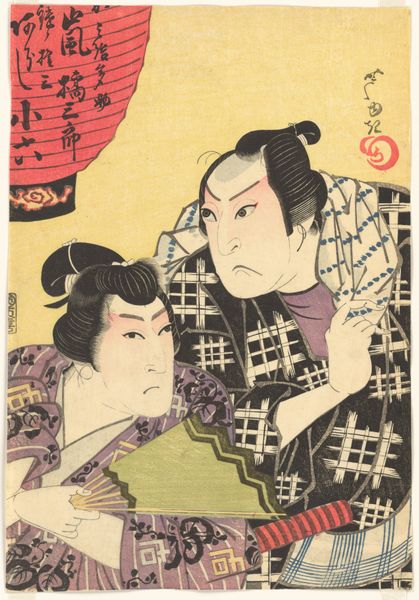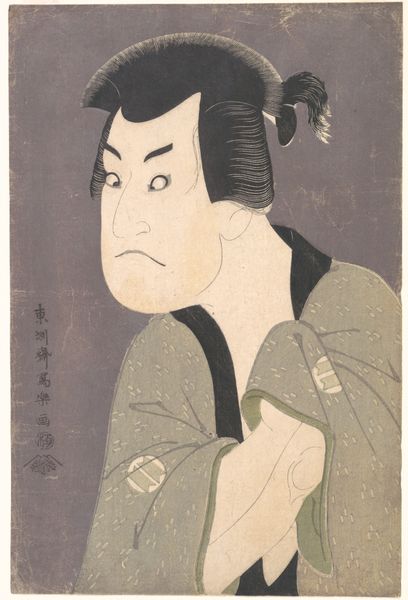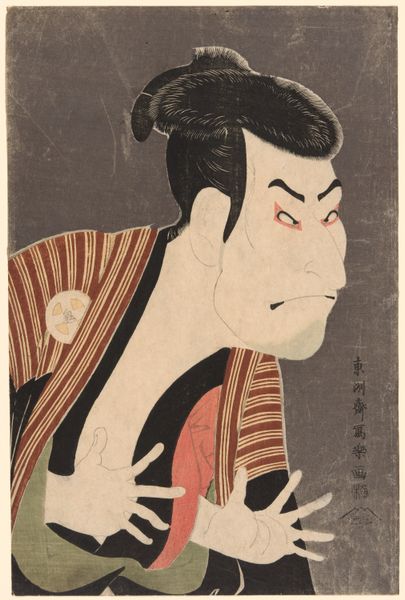
The actors Nakajima Wadaemon (R) as Bodara Chozaemon and Nakamura Konozo (L) as Gon of the boat-keeper Kanagawaya 1794
0:00
0:00
print, woodcut
#
portrait
# print
#
asian-art
#
ukiyo-e
#
woodcut
Dimensions: 38.1 × 24.8 cm
Copyright: Public Domain
Editor: This woodcut print from 1794 by Tōshūsai Sharaku, currently housed at The Art Institute of Chicago, is titled "The actors Nakajima Wadaemon (R) as Bodara Chozaemon and Nakamura Konozo (L) as Gon of the boat-keeper Kanagawaya." The composition feels incredibly intimate, almost intrusive, given how closely the two figures are rendered. How do you interpret this work? Curator: I see this ukiyo-e print as a powerful statement on class, performance, and visibility in Edo-period Japan. The stark portrayal of these Kabuki actors, playing lower-class characters, highlights the theatrical nature of social roles. Sharaku, unlike his contemporaries, avoided idealizing his subjects, revealing the individual beneath the mask. This was a deliberate political decision that challenges societal norms of representation. What do you make of their expressions? Editor: The actor on the left seems confrontational, even angry, while the other appears almost sheepish, or worried. It's interesting that Sharaku chose to portray such raw emotion, moving away from traditional representations. Curator: Exactly. The subversion of social expectations through exaggerated expression makes the viewer question the nature of social hierarchy and visibility. In a society obsessed with surface and outward presentation, Sharaku's focus on unflattering honesty becomes a form of resistance. Consider, also, how ukiyo-e prints were themselves a form of popular art, accessible to a wide audience, making these critiques all the more potent. What does it tell us about art's role in affecting change? Editor: I guess I hadn't considered the way that art could offer such a potent perspective into cultural hierarchies. Seeing it this way has given me a greater understanding of this work as more than just an image but instead a powerful social commentary. Curator: And in recognizing that potency, we appreciate its capacity to effect change, by reflecting our world back to itself.
Comments
No comments
Be the first to comment and join the conversation on the ultimate creative platform.
